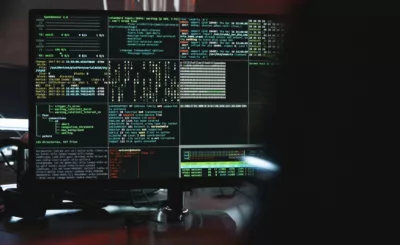A few years ago when we were buying furniture for the first 8th Light office I came across a piece called the WalkStation. It was an adjustable height desk with a treadmill underneath.

The Motivation
I had just started to get myself into better physical shape, and thought this would be a unique way to change a sedentary job into an active one. The price tag turned out to be way to high ($4500+).
Fast forward to January 30th, 2010. At ORDCamp, Zach Kaplan, founder of Inventables, gave a presentation about Dr. James Levine and the research he’s done creating active computer workstations. It turns out that Dr. Levine is the guy behind the WalkStation that I had seen earlier.
Zach had thrown together a treadmill and a laptop desk to try out the concept and was raving about the benefits. It was the motivation that I needed to finally get to building my own treadmill desk.
Acquisition
Using Craigslist, I found a treadmill just blocks from my house. It is a ProForm 830QT. Sears sells this brand, and I think this one retailed for around $900. I paid my neighbor $140 for this one.
My next stop was Ikea. Somewhere in the back of my brain I remembered seeing a desk at Ikea that was adjustable on-the-fly. I went searching, but found nothing that could be adjusted without tools and without unloading the desk first.
I had done a bit of a web search earlier for adjustable surfaces, but hadn't come across anything in a reasonable price range. I headed downstairs to the “as-is” section of Ikea and snatched a Gallant table, frame, and T-Leg combo for $60. The legs alone cost that much new.
The combo had been a display model and was a little bit dinged up, but the price was right.
Construction
My first concept was to build a free standing table that would sit over the top the treadmill. The table I picked up was wide enough, but the Gallant legs maxed out at around 36" and I knew that wouldn't be enough. I began envisioning ways to make the legs longer.
In the meantime I started to take apart the treadmill. I just started unscrewing and unplugging everything I found until I was left with just the touch-panel unit and circuit board in my hand.
There was one cable running through a leg of the treadmill that was pretty obviously the main control cable back down to the motor below. There was also an audio cable, a cable running to the hand-grip heart rate monitor, and an extra heart rate cable leading to nothing.
After a look at the manual, I discovered that this cable can be connected to an optional sensor for heart rate chest straps. The whole idea of this setup is to walk slowly and keep the heart rate down, so I just yanked out all the heart rate cables and sensors.
With all of the electronics off of the treadmill, it was back to figuring out how to mount the desk. This treadmill has hand grips on either side. I yanked furiously on these for several minutes trying to pull them off to see what was underneath.
After consulting the assembly manual, I saw there was nothing holding them on, so I got out a pry bar and went to town. They eventually gave way and revealed the horizontal supports that were to become the foundation of the table mount.
A 2x4 set across the hand grip post put the work surface at just about the right height, so I drilled a hole through the posts and bolted on the 2x4.
The Gallant table frame has lots of mounting holes, so after removing the frame from the desktop, I chose two holes and bolted the frame on top of the 2x4.
Things were looking good, but for the two post that would prevent the table top from being installed. At first I thought that I could cut the uprights off.
But my dremel cutting wheel and hack saw were no match for the thick posts. Without the right tools or know-how to deal with metal, I resigned myself to notching out the table top to fit around the posts. This operation was a measure twice, start over, measure twice again kind of affair.
But with some care, I was able to cut the notches with a drill and a jigsaw. A quick tip here. When you cut through a laminated surface like most Ikea stuff, masking or packing tape on your cut line will prevent the laminate from chipping.
Amazingly, I had measured and cut the notches right and the table top slid in place and the old holes to the frame lined up nicely.
With the table top mounted, it was time to get control of the treadmill back. First the touch-panel and circuit boards needed to be contained. I didn’t want to spend more money on a project box, so I started hacking away at the plastic enclosure that I had disassembled earlier.
I was able to cut away everything but a box the just enclosed all the pieces and was even left with two screw holes for mounting. The problem was where to mount it. I wanted the controls accessible, but out of the way most of the time. They couldn't interfere with walking or typing.
I settled on a keyboard tray that would mount underneath the desktop. It could slide under most of the time, and then pull out easily to start and stop the treadmill or change the speed. Ikea has a tray for just under $10, so it was back to Ikea for the Summera Pull-out keyboard shelf.
With the touch-panel mounted on the keyboard tray, there was just not quite enough slack in the control line to be able to pull the controls out far enough to see the entire display. I took the cover off on the base of the treadmill to investigate the control cable and see if I could create any slack.
I was able to free up enough cable so that the tray could come out far enough, but it came at the cost of the treadmill’s incline feature. The cable will bind now because of the re-routing when the incline it pushed up.
Results
So it’s been about 3 weeks with the treadmill desk. Here are some of the questions I’ve received:
Q: Don’t you get tired?
A: Sure, then I sit down for a while.
Q: Isn’t it distracting to your work?
A: I’ll admit it took a little while to get over the novelty of walking and coding. Once the meta-conversation in my head stopped (“Look at me, I'm on a treadmill, and I’m writing code!”) then I think that low level physical activity has actually helped to keep me focused.
Walking engages a completely different part of my brain. I compare it to how some people will pace when they are making a decision.
Q: What about pair-programming?
A: Colin and I have been experimenting with pairing on the treadmill. We’ve integrated it into our normal ping-pong rhythm. The one coding is the one walking. One green-red cycle, and then we switch.
It’s a little bit hard to stand and look over the walkers shoulder, so we’ve been using a second laptop sharing the screen of the first. With both laptops on the same network, the point-to-point screen sharing is pretty responsive.
We’ve had the best luck with Skype. A second screen also allows the pair to sit for a while. I’m still imagining how two treadmills could come together for a fully-walking pair station.
Q: How fast do you walk?
A: 1 MPH for the most part. We’ve done okay at 1.3 - 1.5 too. I can stay pretty stable even up to 2.0, but I start to get overheated at that speed.
Q: What effect has it had on you?
A: My knee hurts a bit after being on all day. Colin and I have both noticed that we get hungry sooner when walking. I think that mean that our metabolisms are running faster. So I make sure to eat a good breakfast everyday, and we are really ready for lunch at noon now.
References
- Dr. James Levine talk about treadmill desks
- The Mayo Clinic’s Non-Exercise Activity Thermogenesis Lab
- Jay Buster’s Treadmill Desk
- Treadmill Sensei - Good reviews and info and treadmills
Photos









